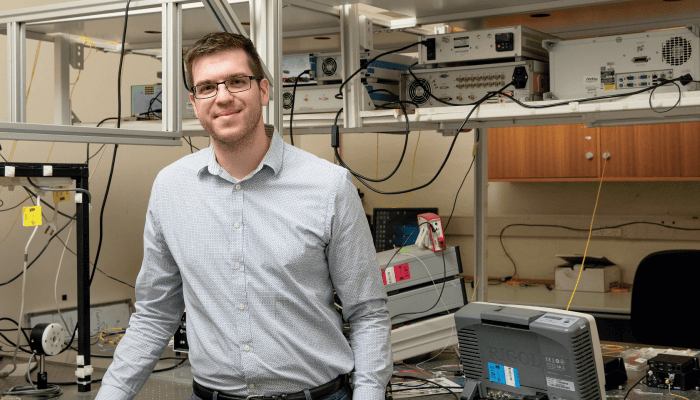
Image above: Andrea Redondo-Blanco in a lab in the Sydney Nanoscience Hub. Photo University of Sydney.
A completely new way of applying laser light could be used for biomedical applications, including corneal surgery. Researchers at the Institute of Photonics and Optical Science at the University of Sydney, Australia, have developed the “pure-quartic soliton laser,” which can deliver large amounts of energy in ultrashort bursts. And it could aid in removal of material from the eye without causing damage to the surface. The laser uses soliton waves that can maintain their shape, but previously could not be produced at sufficiently high energies. The newly-developed laser is capable of delivering pulses as short as a picosecond (one trillionth of a second), with high amounts of energy. Eventually even shorter bursts could be achieved, and the scientists hope to see the laser deliver hundreds of kilowatts of peak power.
References
- AFJ Runge et al., Nat Photonics (2020). Available at: https://go.nature.com/2ASBVHw.
